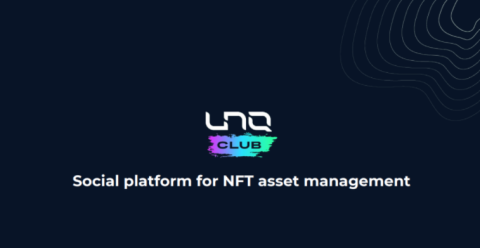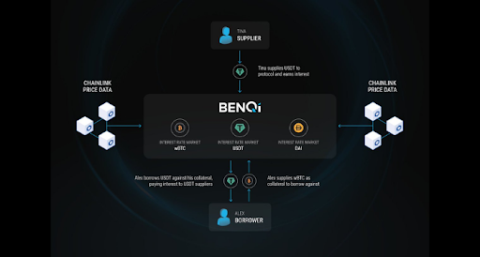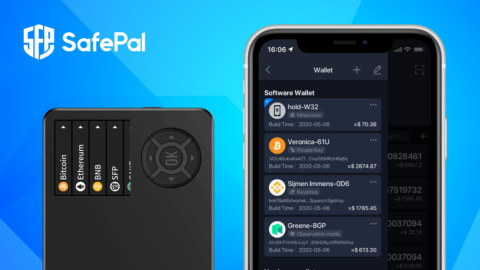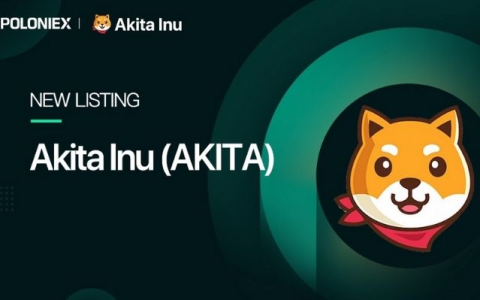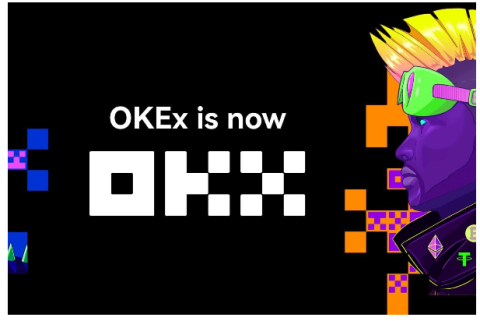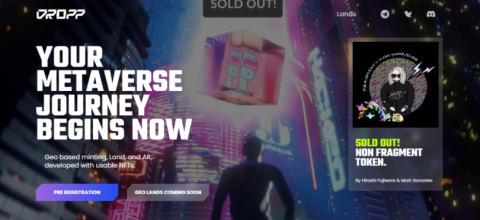What is thena? Discover the outstanding features of Thena and THE . token

Ngoài PancakeSwap, hệ sinh thái BNB Chain còn có một AMM khác có TVL đạt 150 triệu USD chỉ sau hai tháng ra mắt, dự án này được gọi là Thena.
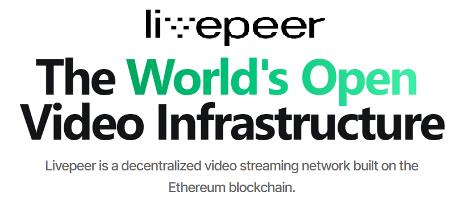
Livepeer is a protocol that provides a decentralized live video streaming infrastructure based on Ethereum . It is designed with completely open source code so anyone can use it to deliver high quality videos to their audience more efficiently.
The project aims to serve as a media player in the development of the Web 3.0 world .
Today, 80% of internet bandwidth is used for streaming video. However, for broadcasters (TV stations/content creators), the cost of broadcasting live video is very expensive because they have to transcode the video to ensure it is played at the best quality on all devices. device before distributing it on the internet.
Livepeer is a protocol that enables broadcasters and developers to stream video while reducing the associated costs by up to 50 times.
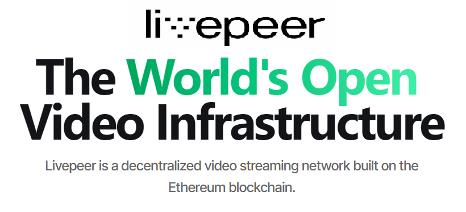
The Livepeer platform is a completely decentralized P2P solution that interacts through a marketplace secured by the Ethereum blockchain. There are two main roles in the Livepeer network: Orchestrator, delegator.
Orchestrator
Orchestrator is a person who contributes a computer's resources (CPU, GPU, network bandwidth) for video transcoding and distribution. In return they will receive fees paid in cryptocurrencies like ETH. The condition to become an orchestrator is to hold LPT tokens.
However, not everyone has the necessary expertise to do the job of an orchestrator. It requires serious, full-time technical knowledge.
Delegator
If LPT token holders don't have the time or expertise to run the necessary infrastructure to take on the duties of an orchestrator, they will stake LPT tokens to orchestrators they believe are doing a good and honest job.
These tokens will be locked for a certain period of time and can then be reclaimed or staking to another delegator.
When a broadcaster pays for the service, both the orchestrator and the delegator get a share of that fee as a reward for ensuring a secure, high-quality network.
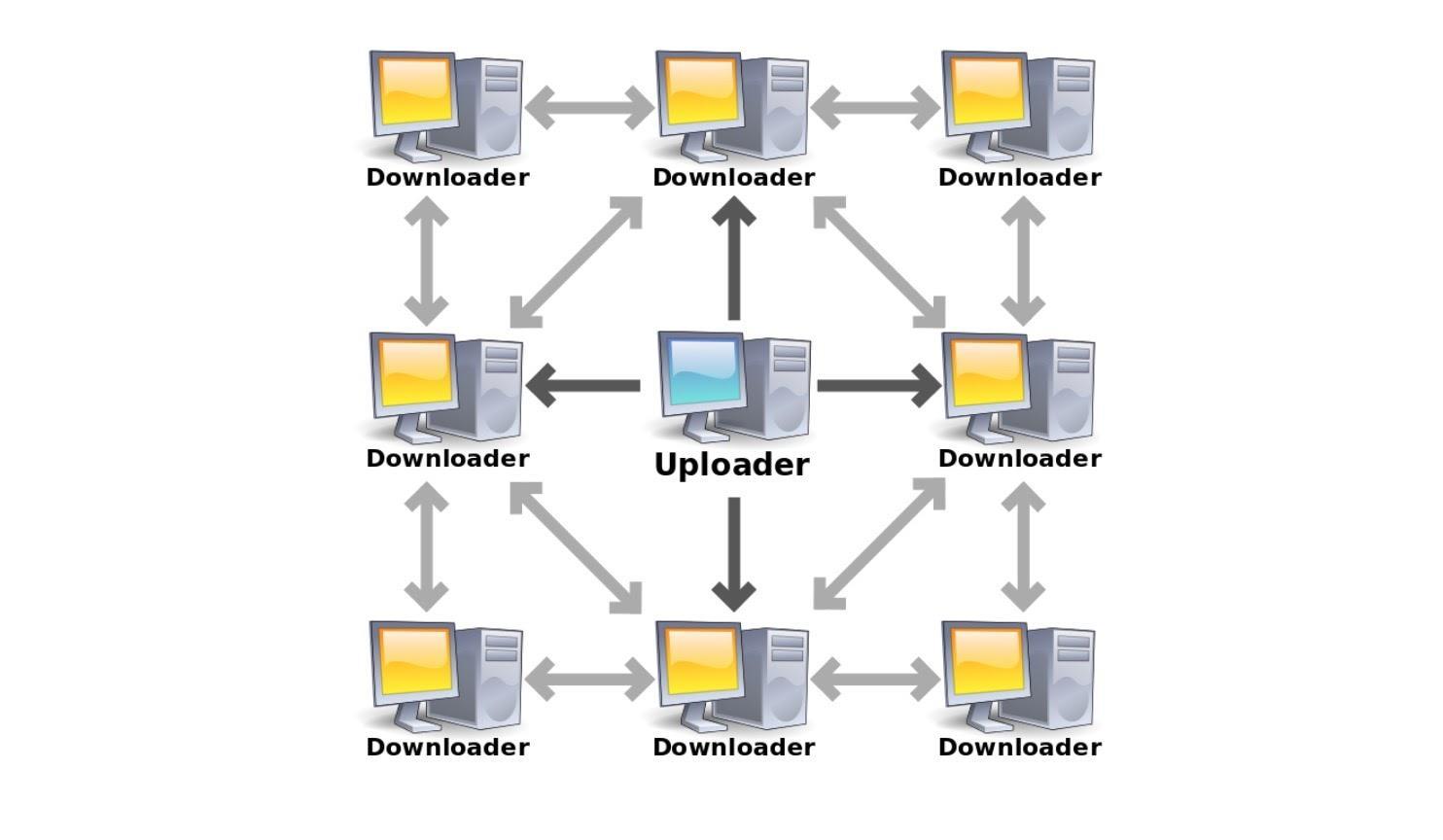
This technology is basically available in the market like BitTorrent, but there is still no optimal solution to encourage users to run nodes that provide the same functionality, and there is no suitable funding source. suitable for the development of an open protocol to facilitate the development of this model.
However, the Livepeer project team is now able to encourage users to contribute their computing power and line bandwidth to the live video broadcast feature.
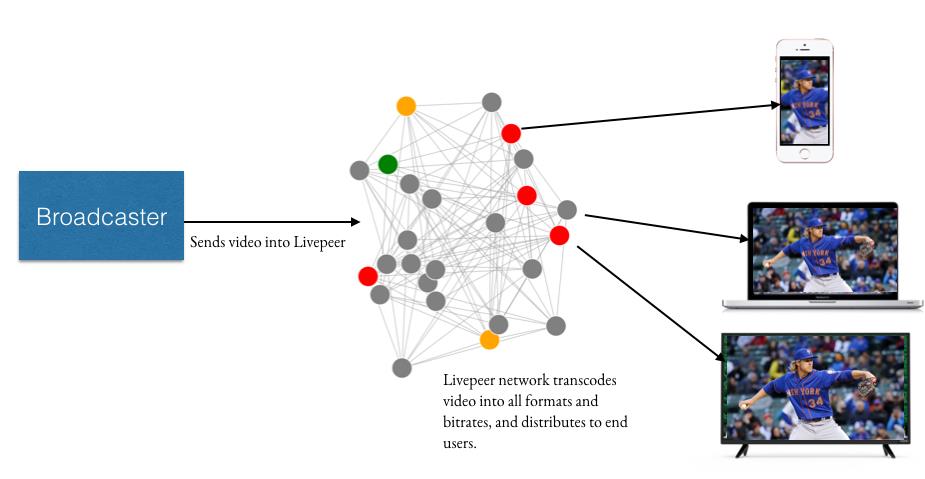
How does the Livepeer protocol work?
Users will join the Livepeer protocol according to the following process:
Stores, organizes and processes live streaming videos
Broadcasters will capture the original video, and then process it through the media server. The transcoders then convert the video to a variety of formats, distributing the video across the network so that the highest quality video is available to the audience.
Demand for video services is growing exponentially in terms of infrastructure with the advent of 4k video, ultra HD, VR streaming, etc. Live video streaming infrastructure requires a solution. more scalable and cost-effective way to keep pace with this growth.
Current decentralized toolkits (as per Web 3.0 concept) contain only solutions for some of the basic steps for live video platforms such as file transfers and payments. But so far there is no solution for shooting, editing, transcoding, processing formats ...
To solve this problem, Livepeer built Livepeer Media Server (LPMS), an open source multimedia server that provides all the necessary functionality for DApp developers and broadcasters to build streaming functionality. directly into their applications.
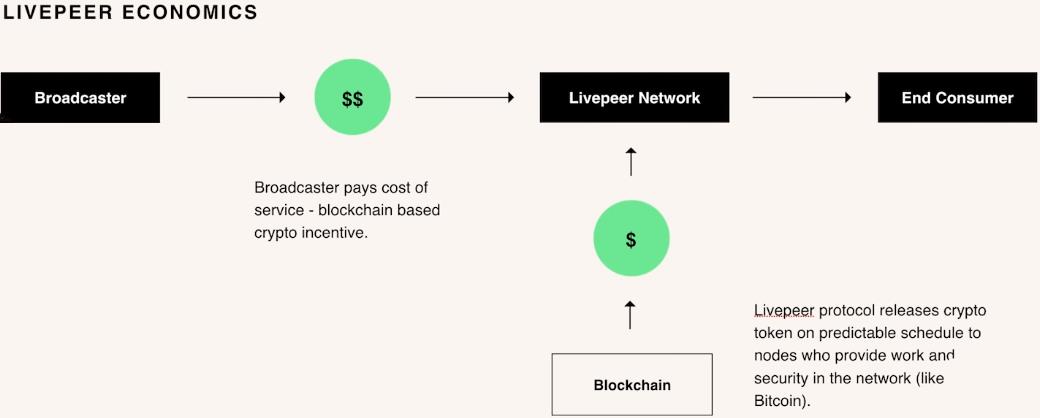
Livepeer Media Server (LPMS)
Any developer can build an application directly on LPMS. But it is still centralized and needs to be extended through traditional forms.
However, when every node on the Livepeer network runs LPMS and those nodes contribute their processing power and bandwidth for transcoding and live video delivery, a network can scale itself and Paid use will be provided to developers. At this point, users only need to submit their live broadcast videos to the network, ignoring the rest of the process.
Current centralized solutions are subject to third-party censorship and control over information such as: User data, relationships, monetization functions.
The Livepeer project has provided everyone with the most authentic media streaming platform, allowing a broadcaster to connect directly with their audience without altering, editing or managing content. . Here are some apps and services built on Livepeer:
The Livepeer protocol is designed to:
In a decentralized network where participants are paid in proportion to the amount of work they have contributed. There are two major challenges that need to be addressed to ensure security:
The Livepeer protocol has solved these two problems thanks to its two-layer consensus mechanism. At the same time, it also provides solutions for the automatic scalability of the network and is being gradually improved in the management process.
Livepeer has a two-layer consensus system. In the first layer, the transactions arising in the system will be using a consensus mechanism with the same security features as other blockchains. However, the second layer will use the Delegated Proof-of-Stake (DPoS) mechanism to decide the distribution of the newly created LPT.
DPoS (decentralized proof of stake) is a consensus mechanism by which shareholders entrust their shares to those responsible for validating transactions and maintaining the blockchain.
The role of the validator in the Livepeer network is taken over by the transcoder. Any user can entrust their stake to a transcoder. This transcoder is responsible for performing transcoding jobs in the network, participating in the job verification protocol, and using on-chain functions at specific intervals to validate the work.
Once completed, the Livepeer protocol will split fees, generate new tokens, and it will also cut the stakes of bad actors. The result will be logged on-chain via Truebit once it completes the validation step. So there will be no contention between broadcaster and transcoder.
This mechanism can both ensure the scalability of the decentralized working network and can also prevent deliberate attempts to mine tokens that do not contribute to making the system susceptible to inflation.

Livepeer Inc is the company behind the Livepeer platform. Livepeer Inc was founded by Doug Petkanics and Eric Tang.
Doug Petkanics – Founder, CEO: He graduated in computer science from the University of Pennsylvania in 2006. Since then, he has been an integral part of several big-name companies such as Groupon and Wildcard. In 2006, he joined Accenture as an analyst. In 2010, he co-founded Hyperpublic. In 2013, Petkanics co-founded Wildcard, a web browser publishing platform. From 2016 until now, he has focused on developing Livepeer.
Eric Tang – Founder, CTO: Eric Tang graduated in electrical and computer engineering from Carnegie Mellon University. In 2008, he joined Next Jump as a software developer. In 2010 he became product manager for Clickable, then he partnered with Hyperpublic co-founder Doug Petkanics. Since then, the two have worked together on Wildcard and now Livepeer.
In terms of technology, Livepeer Inc wants to develop content recognition software for nodes. Specifically, the team wants to develop an AI program that can automatically detect certain types of content such as: Adult content or copyrighted content in videos encoded by the Livepeer protocol.
This is a necessary feature because the technology will aid in the censorship of unwanted videos, keeping the network safe in terms of content for all users. However, the development team also notes that: Nodes will not be required to run this type of software, which cannot be censored at the level of decentralized protocols like Livepeer.
Another technological milestone in Livepeer's evolution is the addition of a peer-to-peer content delivery network to the protocol. This will make Livepeer's video streams fully decentralized.
Livepeer is also considering migrating to a layer-2 blockchain on Ethereum due to Ethereum's high gas fees currently. The team is planning to start developing their protocols onto other smart contract blockchains.
The goal of the project development team is that the Livepeer protocol will be completely decentralized. They are now on the cusp of reaching that goal. The problem now is only the management process of Livepeer, because it is still improving in terms of quality.
Advisors, investors and partners of the Livepeer . project
Livepeer raised a total of US$31 million in funding in 4 rounds of funding. Their latest funding was raised on July 29, 2021 from a Series B round led by Digital Currency Group (DCG).
Investment entities and organizations that have contributed capital include: Coinbase Ventures, CoinFund, Northzone, Animal Ventures, 6th Man Ventures. 1kx, BoxGroup, Collaborative Fund, Compound, Distributed Global, Haivision, Libertus Capital, M31 Capital, Multicoin Capital, North Island Ventures, Notation Capital, Pantera Capital, Turing.
Livepeer Token (LPT) is the native token of the Livepeer network. But it has no exchange value. Broadcasters use Ethereum's ETH token to pay for video streaming on the network. Orchestrator, delegator will earn ETH as fees from broadcasters.
The purpose of the Livepeer token (LPT) is to coordinate, launch, and incentivize participants to ensure the Livepeer network is as cheap, efficient, secure, reliable, and useful as possible.
In the Livepeer protocol, in order to receive the tasks of transcoding and distributing video on the network, it is necessary to own an LPT. The workload in the network will be distributed according to the ratio of staking and delegating LPT tokens.
LPT tokens play an important role in the Delegated Proof-of-Stake (DPoS) consensus mechanism. Transcoders (or to other networks called validators) will staking LPT tokens to take the job of encoding the videos and validating the work. If the transcoder violates the protocol, they will be penalized on the staking LPT.
Services such as DVR, subtitles, ad insertion, monetization, analysis tools can all be included in the Livepeer ecosystem and take advantage of the security of staking LPT.
LPT was initially distributed so that users could join the Livepeer network and perform different roles contributing to the development of the ecosystem. After that, additional LPT tokens will be released according to the algorithmically programmed plan.
Livepeer initially minted 10,000,000 LTP with unlimited total supply. The current circulating supply is 21,164,655 LPT. The total initial mint is distributed as follows:
Currently, all LPT tokens are unlocked.
Livepeer Token (LPT) is getting more and more attention and search. That is why many exchanges are starting to offer trading pairs with this cryptocurrency. If you are interested in LPT tokens, you can buy them on exchanges such as Gate.io, Poloniex, OKEx, Sushiswap...
Livepeer is not a platform just for video viewers. Instead, the whole focus of the team is on providing developers with reliable and robust streaming application infrastructures. What they desperately need to ensure the best customer experience.
Livepeer's protocol and Tokenomics are designed to incentivize more participation, either through single-node operation or by staking, helping to keep the infrastructure secure, trusted. The network already has more than 70,000 GPUs working, enough synergy to encode all the real-time videos on Twitch, Facebook, YouTube combined.
As such, as the Web 3.0 market develops and matures, the Livepeer protocol will be one of the pioneering decentralized infrastructure services.
In addition to following project news on TraderH4 , investors interested in this project can learn more at the following information channels:
Ngoài PancakeSwap, hệ sinh thái BNB Chain còn có một AMM khác có TVL đạt 150 triệu USD chỉ sau hai tháng ra mắt, dự án này được gọi là Thena.
Blockade Games provides a platform that allows developers to create blockchain games. In addition, Blockade Games also creates many interesting free games.
UNQ Club is a project that provides a blockchain platform that allows investors to collect and manage existing NFT assets.
BENQI is one of the important pieces of the Avalanche ecosystem. Join TraderH4 to find out what BENQI (QI) is as well as detailed information about the QI token.
In addition to a cryptocurrency storage wallet, SafePal is also known to many investors for its SFP tokens and airdrop events with attractive rewards.
The fever from Akita Inu in the Crypto market in the past time has created a great buzz along with the rapid development of the "dog house token".
What is IoTeX? This is a blockchain built and developed in conjunction with the Internet of Things (IoT). Join TraderH4 to learn this article.
What is OKB? OKB is an exchange coin of OKX and the OKX Chain blockchain. Let's learn about OKX and OKB exchanges with TraderH4 in this article.
DROPP GG brings an innovative and novel idea to provide an NFT mint platform based on geographies outside of the real world.
CronaSwap is a DEX built on Cronos Chain, which has a similar model to Uniswap.

